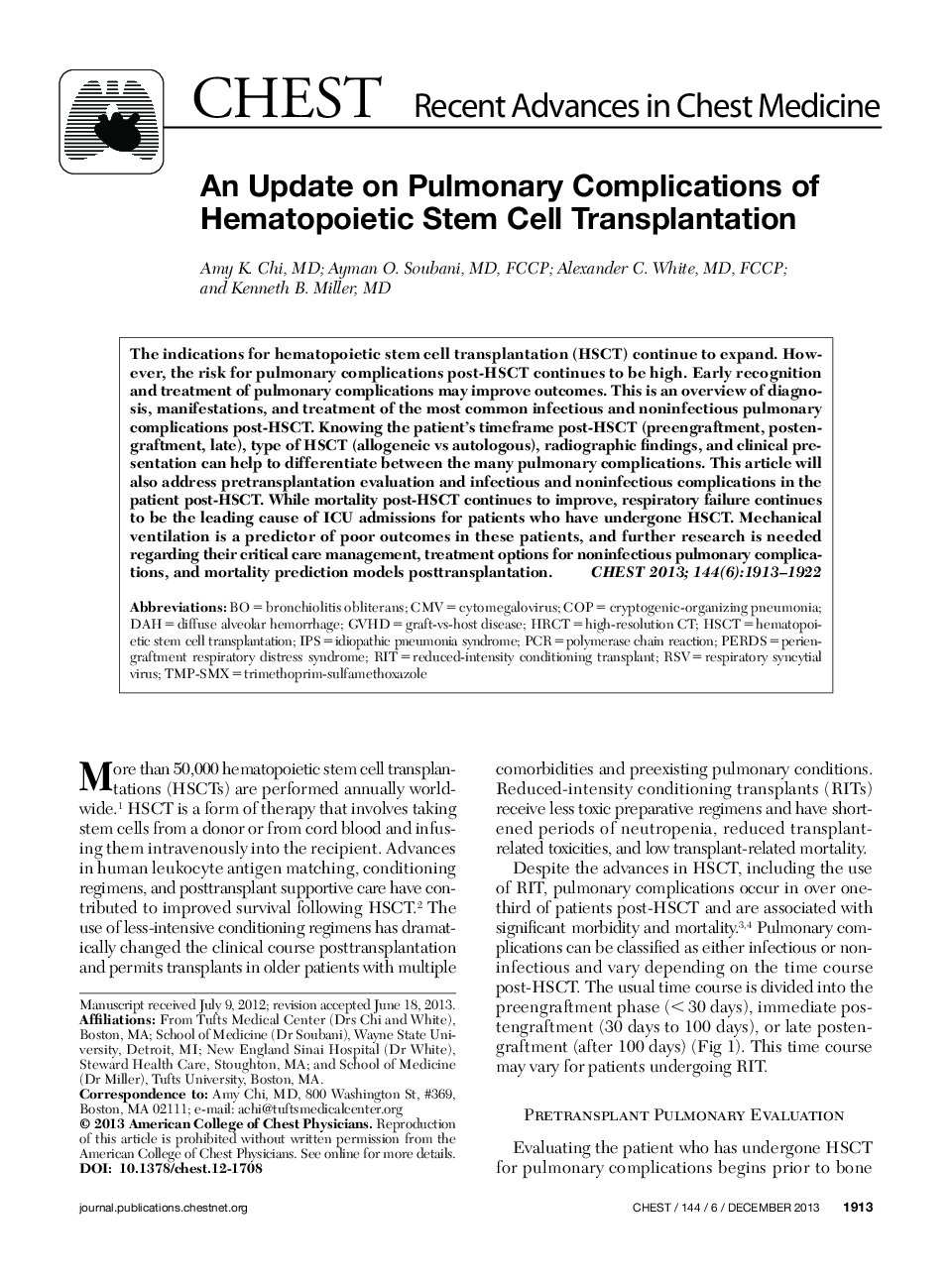| Article ID | Journal | Published Year | Pages | File Type |
|---|---|---|---|---|
| 2900302 | Chest | 2013 | 10 Pages |
The indications for hematopoietic stem cell transplantation (HSCT) continue to expand. However, the risk for pulmonary complications post-HSCT continues to be high. Early recognition and treatment of pulmonary complications may improve outcomes. This is an overview of diagnosis, manifestations, and treatment of the most common infectious and noninfectious pulmonary complications post-HSCT. Knowing the patient's timeframe post-HSCT (preengraftment, postengraftment, late), type of HSCT (allogeneic vs autologous), radiographic findings, and clinical presentation can help to differentiate between the many pulmonary complications. This article will also address pretransplantation evaluation and infectious and noninfectious complications in the patient post-HSCT. While mortality post-HSCT continues to improve, respiratory failure continues to be the leading cause of ICU admissions for patients who have undergone HSCT. Mechanical ventilation is a predictor of poor outcomes in these patients, and further research is needed regarding their critical care management, treatment options for noninfectious pulmonary complications, and mortality prediction models posttransplantation.
